Basic Elements and Principles of Interior Design of Buildings
Interior design is an art of designing the inside space of a building creatively and technically. The designed space should be visually attractive and allow the clients to perform their works. The client or user should not feel discomfort with the position of an object in a space or by the color, size, and shape of an object.
Elements of Interior Design
- Color
- Light
- Shape
- Space
- Line
- Texture
Color
Color is an important element of interior design. It plays vital role such as client can decide the whole design just by color observation. Colors should be used in such a way that it represents its function and it should facilitate good comfort.
Here are some color suggestions for different rooms:
Natural Colors
Yellow, green, blue, organic browns etc. are come under natural colors. They gave delicate or bold accent to the interior. Natural colors remind the sense of outdoors. So, these are most suitable for bedrooms, bathrooms etc. where individuals likely to relax or freshen up.
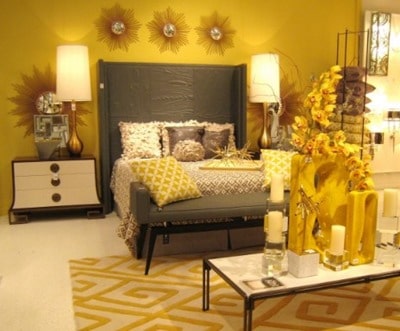
Comfort Colors
Color come under this category are pumpkin orange, cocoa browns, biscuit and wheat colors etc. comfort colors make the room warmth and user will feel relief. These colors are suggested for kitchens, halls etc.
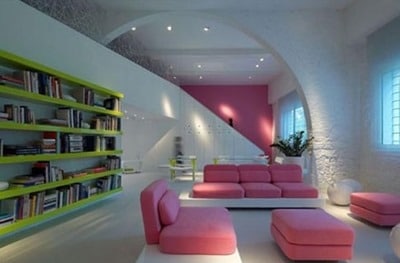
Contrast Colors
Deep red, brisk blacks, whites etc. come under Contrast colors. They give a sophisticated backdrop to the room, so, they are good choice for dining halls, living area etc.
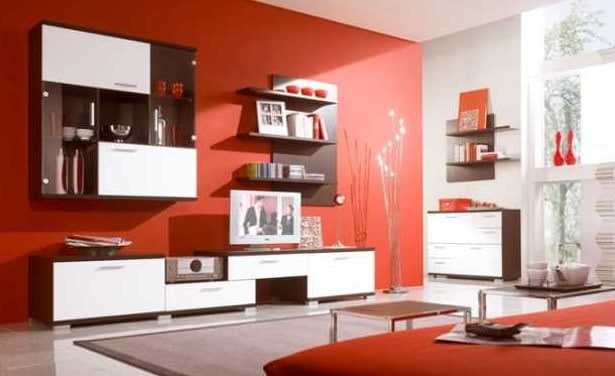
Light
Light is an important factor not only as an element of interior design but also as an important consideration for building construction. Proper Light is essential for the users to perform their activities with comfort.
The building should utilize maximum natural light or day light during day time for routine activities. Doors, windows, ventilators are used to allow natural light into the interior.
Day light factor = (natural light inside the building)/(natural light outside)
Daylight factor recommended for different rooms are as follows:
| Room/space | Daylight factor |
| Kitchen | 2.5% |
| Study room | 1.9% |
| Living room | 0.625% |
| Bed room | 0.313% |
Now comes the artificial illumination in which an artificial light source is arranged inside the rooms. There are three methods for lighting a space:
General Lighting
General lighting or ambient lighting is normal required lighting provided in rooms. It covers all the corners of the room and provides comfort for the users.

Local Lighting
Local lighting also called as task lighting in which light source is provided only for the space in which some activity or tasks are performed. The light sources are installed nearer to the task areas.
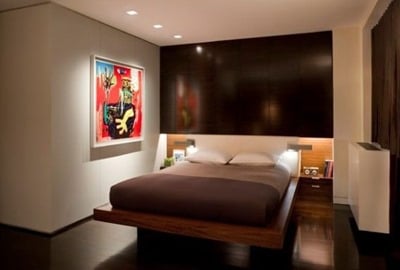
Accent Lighting
Accent lighting is similar to local lighting, but it is used for special purposes. Accent lighting is more aesthetic for the observers, so, it is used to highlight the objects, in decorative rooms, etc.
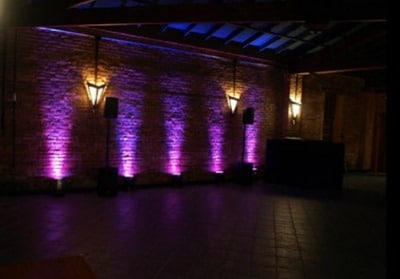
Shape
Shape is a dimensional area which is decided by outline of an object. If two or more shapes are combined then it is called a form. Shapes are three types.
Natural Shapes
Natural shapes are nothing but shapes of naturally occurred objects like flowers, mountains, clouds etc. These shapes create natural feel in the space.
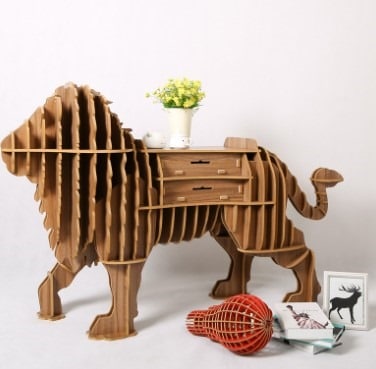
Geometric Shapes
Geometric shapes like square, rectangle, triangle etc. are contain proper area and size. They can be easily provided.
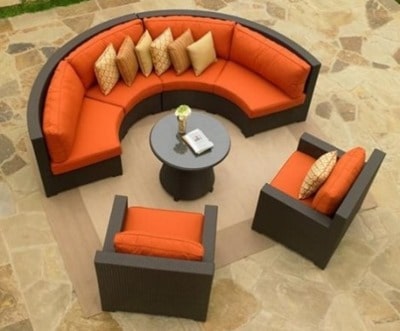
Non-Objective Shapes
Non-objective shapes are manmade created artificially by colors, random edges and lines etc.
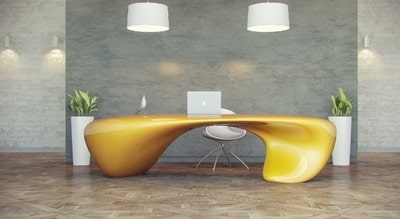
Space
Space is an important element of interior design. Space is nothing but the area available to allow different purposes. Space can be divided into two types.
- Two-dimensional space
- Three-dimensional space
In two-dimensional space, length and width are considered while in three-dimensional space, length, width and height are considered. This space is used for different purposes like placing furniture, decorative items etc.
Filled space is called as positive space and empty space is called as negative space. A good designer should provide balance between positive and negative spaces.

Line
Line is a mark which defines shapes and create forms. In general Lines are of three types as follows
- Horizontal lines
- Vertical lines
- Dynamic lines
Horizontal lines can be observed on beds, tables etc. and they give secure feeling to the space. Vertical lines can be observed on windows, doorways etc. which will give expansion to comfort of a user. Dynamic lines or curved lines can be observed on stairs which will add aesthetic sense to space.

Texture
Texture is nothing but a feel created by looking at an object or by touching it. In interior design, Texture is generally divided as
- Visual texture
- Actual texture
Texture which can feel with our eyes is visual texture and actual texture can be felt by both seen and touch. The interior designer should design texture in such a way that the user should not feel monotony.

Principles of Interior Design
- Balance
- Emphasis
- Harmony
- Scale and Proportion
- Rhythm
- Unity and variety
Balance
The principle of balance is to keep the user brain in equilibrium. Balance of a space can be attained by three methods as follows
- Symmetrical
- Asymmetrical
- Radial
Symmetrical Balance
In this case, the whole space is divided into two halves by central axis. The objects are placed in similar positions in both sides of axis. One side of axis is like mirror image to the other side.

Asymmetrical Balance
In this case, odd number of elements are used. An imaginary central axis is assumed and visually attractive elements are placed near the imaginary axis and dull objects are placed farther from axis.
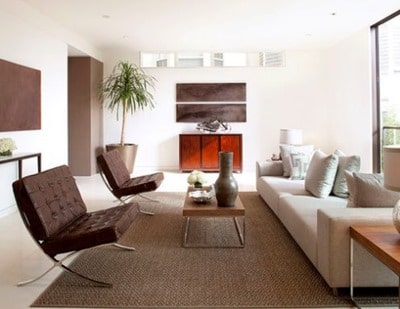
Radial Balance
In radial balance, a central point is considered around which the objects are arranged radially in a circular manner.
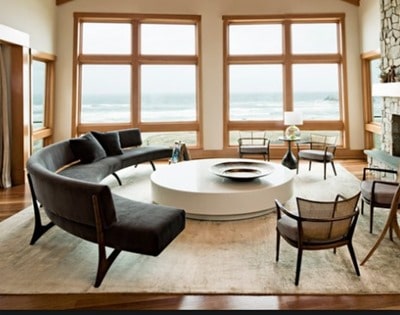
Emphasis
The design principle of emphasis suggests that the central point or focal point of a space should be more attractive and all other elements of that space should be emerged from that point. So, the focal point should be carefully designed with impressive texture, color, size and shape.

Contrast
The principle of contrast refers to the change in the color or luminance of objects. One object may be bright color and object next to it may be light color here contrast varies. Likewise, contrast can be achieved by form and space. Contrast makes dull objects more beautiful by placing it next to brighter objects.

Scale and Proportion
Scale and proportion, both suggests about the relationship between two different objects or two parts of an object. Scale refers only size while proportion refers magnitude, quality, color etc.
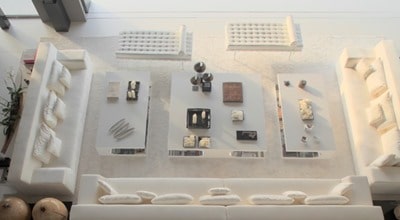
Rhythm
The design principle of Rhythm is based on the arrangement of elements of interior design in a space. The arrangement should create a rhythm in mind while looking at it.
There are three types of methods to achieve rhythm:
- Repetition
- Alteration
- Progression
Repetition
In this method, elements of same size, color and shape are used repeatedly for the design.
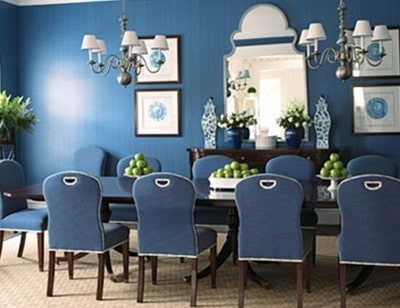
Alteration
Alteration means, two or more elements are arranged in alternative manner to achieve rhythm.
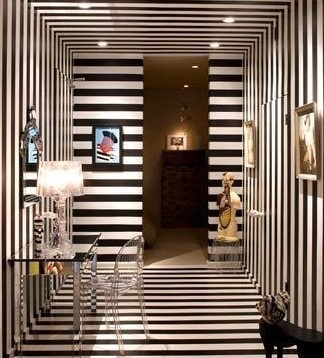
Progression
In progression, elements are arranged in such a way that the size or color gradient of elements are gradually increasing or decreasing.

Unity and Variety
In interior design, the designed space should obey unity throughout its which enable the user to impress without any confusion. Unity should be maintained in such a way that the eye of an observer should move smoothly from one object or shape to another. At the same time, the observer should not feel monotony.
So, variety should be shown in the form of textures, colors, shapes or sizes etc.
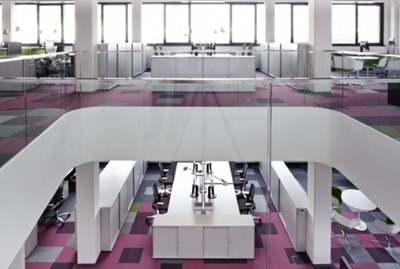
Comments